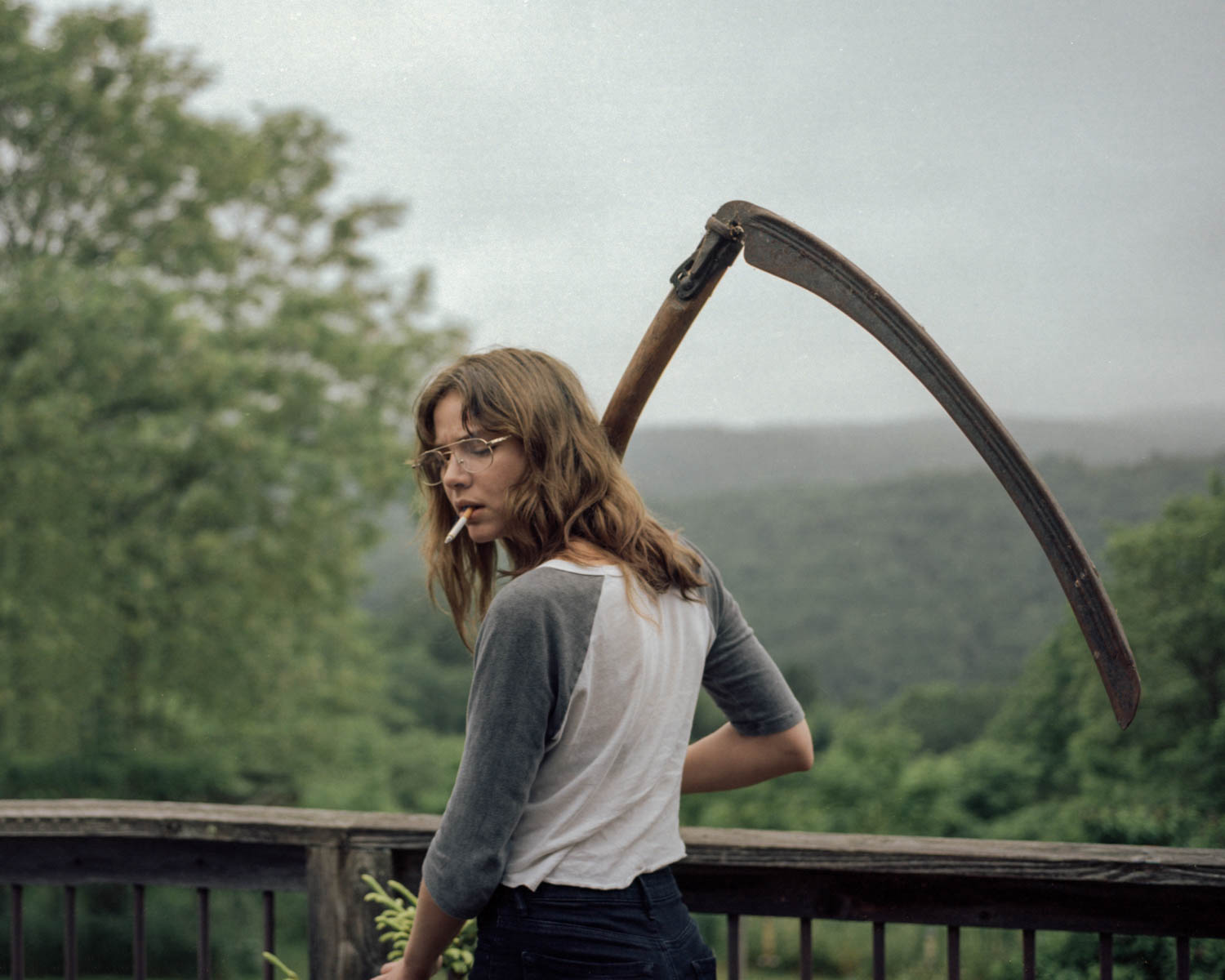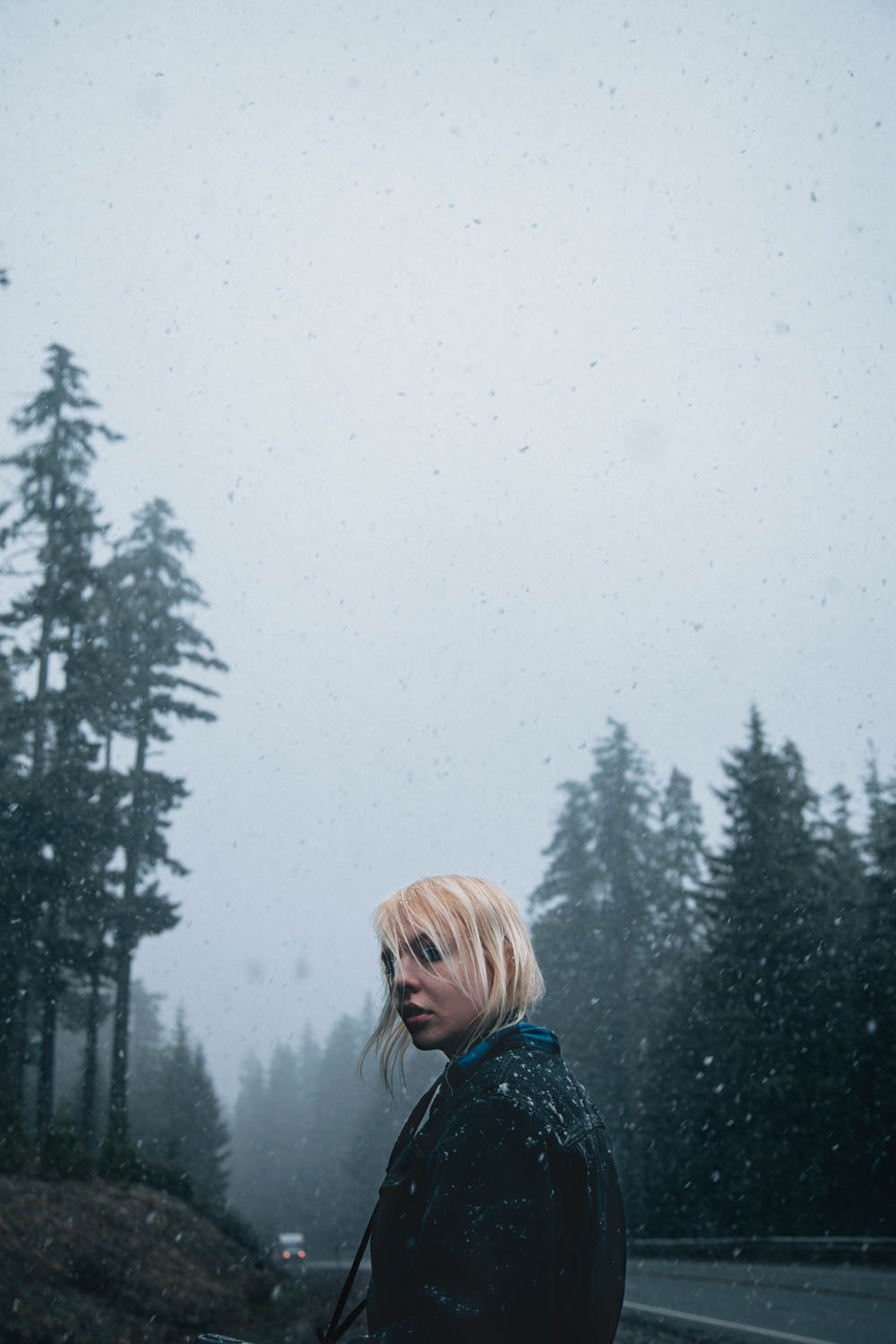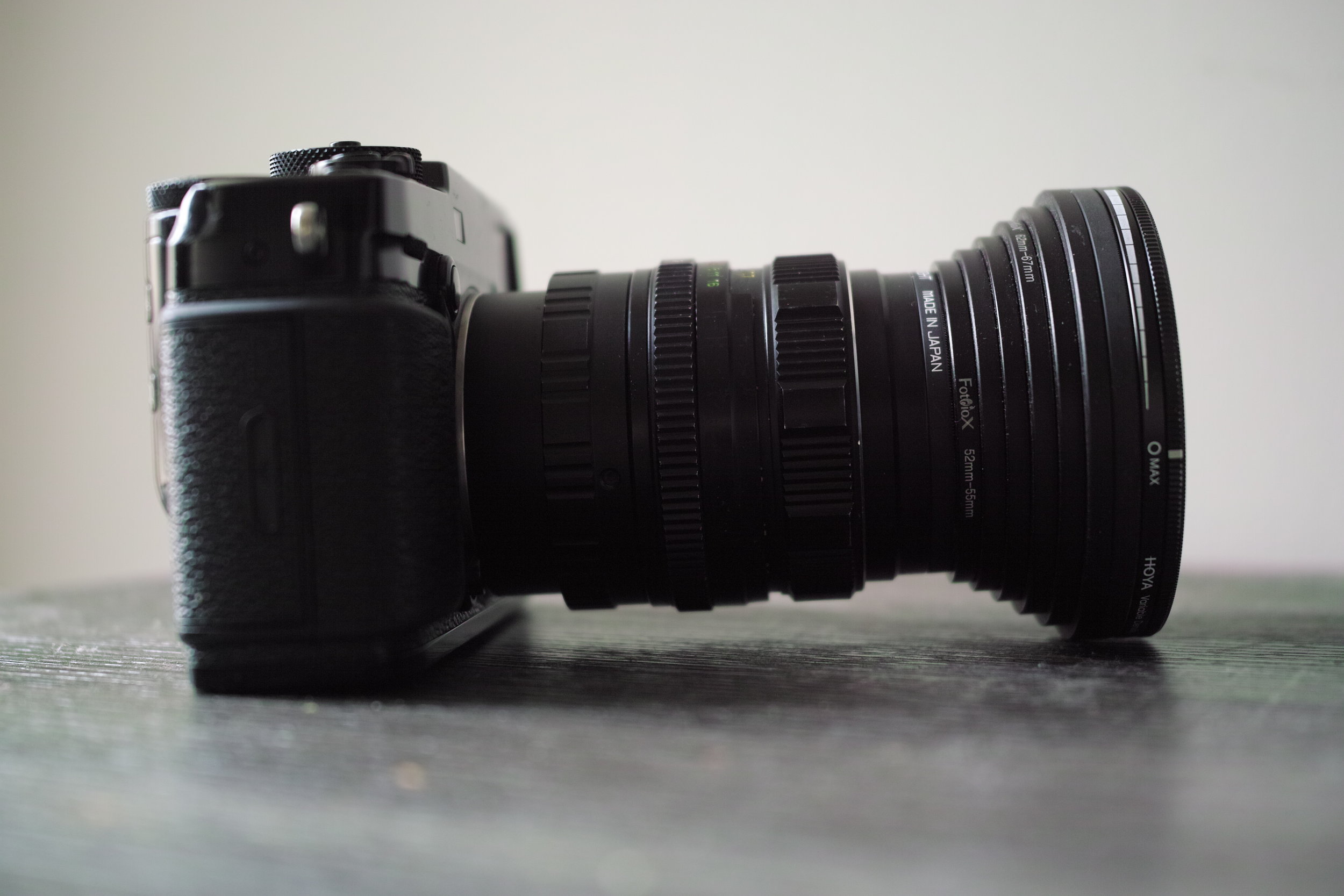Interview with a Portrait Photographer: Brendon Burton
If you're interested in portrait photography as a career, here's what you need to know.
Brendon Burton is a 23 year old conceptual photographer based in Brooklyn, New York. His surrealist imagery caught the idea of several large publications like The Huffington Post, Complex, and Petapixel when he was a teenager. Now, Brendon is signed to Adolescent and works full-time as a portrait photographer and videographer.
Brendon's work evokes a macabre perversion of young adult Americana, borrowing heavily from mystery novels and Junji Ito-esque surrealism. Contrasting the abandoned, sprawling emptiness of the mid- and pacific-northwest with the suffocating sense of being followed – or possessed – Brendon's early work helped to define an entire generation of young conceptual photographers.
In this interview, Brendon shares his insights on launching and supporting a full-time career out of conceptual portraiture.
Photo by Brendon Burton.
What photo are you most proud of?
I’m really proud of a photo I took in a ghost town in California during a thunderstorm. Lightning was striking all around the desert and I waited for what felt like ages to get a shot of a bolt of lightning while everyone ran to the car for cover. In hindsight it was probably stupid to be out in the open, but the result was fantastic.
When did you know it was time to do this full-time?
I realized that it was one of the only things I’ve ever really enjoyed that properly translated my creative ideas properly. Once I began making money from doing something I found so natural and fun I knew it should be what I pursue.
Photo by Brendon Burton.
What are some of your visual references?
I get a lot of visual ideas from rural culture and Americana themes. Lately my work has been focused on truth being stranger than fiction. I tend to submerse myself in these environments before I shoot, that way the ‘feel’ of the image is more genuine.
How did your photos go viral?
I started shooting in 2010 while in high school. I started with 35mm and worked my way up to digital, and by 2012 I was shooting a 365 project. My work was noticed by a few publications through Tumblr and Flickr. Some people have a much better understanding of how things trend/how to market oneself, so I’m thankful it happened spontaneously. It’s like you just upload whatever you like or create and the internet returns something you can never expect.
Photo by Brendon Burton.
What's the best advice you can give to photographers looking to shoot portraits professionally?
Be true to those you are shooting, and be honest with yourself. Don’t be afraid to show excitement about what you are doing. Passion is always sought after but for some reason everyone is afraid to show it because it seems unprofessional. I’ve learned that the electricity between the artist and the subject has a lot of potential once the experience is shared.
What's the most exciting shoot you've ever been on?
The most fun I’ve had on a shoot was a road trip I took for a series last summer. My girlfriend and I lived in the back of a truck and drove around North America shooting every day and staying wherever we wanted. Your focus on what is important shifts to basic human needs and everything after that is just exploring and shooting. I want to go back to that lifestyle once I leave NYC.
How did you get signed to an agency?
Adolescent reached out to me in 2013 while I was still in college. They focus on video work and suggested I should try to put the mood of my images into a video format.
Photo by Brendon Burton.
How do you get the portrait lighting you want when you're shooting such large frames in natural light?
Every once in a while I shoot with a reflector, but more often I just shoot in overcast weather. A lot of my editing relies on subdued colors and even light. I’m a big believer in minimal retouching, not just because I’m lazy but also because that’s how the subject looks. Instead of thinking about fixing the light later I just adjust accordingly while shooting.
What's in your camera bag?
Right now I have my Canon 5D Mark IV, my 24-105mm f/4 and 35mm f/1.4 lenses for my digital set up, my Yashica T3D and Mamiya 7 for film. I also carry a ton of Portra 400 and Ektar 100 for landscape. Another really important addition to my kit is a sedicam for video work, I’ve just recently started taking it along with me just to play with every one in a while.
Photo by Brendon Burton.
How do you find your surreal locations?
I don’t really have a secret method, I really just drive a ton. I love driving and I love being constantly in motion. I usually just wander around a certain area and shoot what I find interesting.
What's the biggest disaster that's ever happened to you on a shoot?
My camera was stolen out of an abandoned house by people that were stripping the copper out of the pipes. It was put in their car but thankfully they were unable to back out of the driveway because they were pretty messed up on opioids so I got my camera back and they drove off. It could have ended a lot worse. Since then I’ve carried mace with me when I go into abandoned places.
Photo by Brendon Burton.
How do you market yourself?
It’s funny because I don’t think I really market myself at all. I just share photos I like on the internet and the feedback usually does the marketing for me in a way. Every once in a while I will try a new style just to diversify my work, the more flexibility your images have can be determined by the viewer, and I leave it up to clients to decide if I’m the right fit. I’m not going to change my style to better fit a budget or brand.
How can photographers use social media to transition in to full time professional work?
Social media is a monster but it’s given so many young artists the platform they need to display their work. Like I said before, just be true. Don’t adjust your editing to better suit a feed or change what you enjoy shooting to get more clicks. Be friendly and supportive, and always take what is shared with a grain of salt.
Photo by Brendon Burton.
How do you achieve such dreamy colors in your photos?
My workflow has slowly developed that pallet subconsciously. I used to push colors a lot more, really unnatural hues because it looked more painterly. Now I tend to strip down a lot of the main colors of a photo and try to replicate them. It creates more of a painterly feel, almost as if I’m attempting to recreate the colors from memory rather than how they were captured.
Finally, list three things you couldn't do your job as a portrait photographer without.
1. Film! I can always adjust colors on digital images, but it’s so much nicer to get the results you want in camera a lot of the time.
2. A sense of humor. If I took myself that seriously as an artist I would probably be not enjoyable to shoot with. I have confidence in my work but I have found it’s more important to be pleasant than intense and broody, no matter how cool you may look.
3. Comfortable clothing. I move around so much while shooting, good shoes and appropriate apparel make the process feel a lot more natural.
Photo by Brendon Burton.
Here's the best gear for professional portrait photography, according to Brendon Burton:
Thanks so much for your time, Brendon. We'd like our readers to know that Brendon is available to hire though Adolescence.













